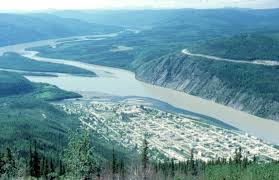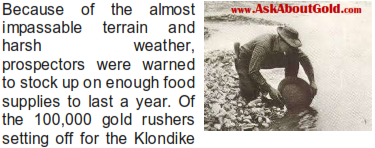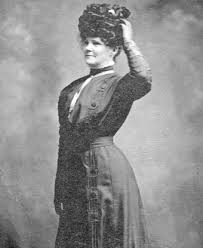The Klondike Gold Rush
George Carmack staked the first claim for himself and two native friends along the Klondike River in Canada's Northwest Territories in 1896. Due to the remote area and the harsh weather, the news of gold wouldn’t escape the region until the following summer when steamships from Alaska docked in the U.S. and the first 68 weary and bedraggled miners disembarked, carrying more than 2 tons of gold in suitcases, boxes, blankets and coffee cans.

Klondile Rive in Canada
Newspaper reports quickly spread the fever that reached epidemic proportions. Nation-wide hysteria had many people exchanging their jobs for dreams of striking it rich in Canada. Streetcar drivers abandoned their trolleys in the street, 25% of Seattle's police force left their posts, even the mayor himself resigned, purchasing a steamship that would be used to float thousands heading north and float him all the way to the bank.

region, only around 30,000 of them actually made it there by the summer of 1898. Some simply gave up and returned home, others were not able to survive the extreme conditions and died. Those who were the first to make it established Dawson Creek.
After months of arduous travel including a wretched sea voyage crowded into “floating coffins”, a steep climb over treacherous mountain terrain while supply-laden, courting frostbite through frequent blizzards in flimsy tents and innumerable delays due to frozen rivers and lack of transport, they had finally reached the fabled gold fields, only to find that all the claims worth working, had long been staked out. To top it off, current claim holders having discovered that gold extraction was thwarted by a thick layer of permafrost, decided to buy and sell claims so they could build their investment on the innocence of the newly arrived and the despondence of the departing. Of the 30,000 that arrived in the Klondike, only approximately 4,000 actually found gold.
Dawson didn't dash the dreams of all the gold seekers. For those few canny entrepreneurs with goods and services to sell, the town literally was a gold mine. People who had survived the winter existing on a meager diet of beans and biscuits were eager to trade their gold for eggs, fruit, writing paper and other luxuries. Others made their fortune by catering to the Klondike fever, selling Klondike medicine chests, Klondike electric gold pans, a Klondike bicycle, even a portable Klondike house alleged to be ‘light as air.’ Anyone with a wagon and a team of a few mules did well for themselves.

Harriet Pullen
History remembers Harriet Pullen, a widow with a brood of children, who turned $7 into a fortune by driving teams all day and baking apple pies in pans hammered out of old tin cans all night. The discovery of gold elsewhere in Canada and Alaska, prompted a new stampede, this time away from the Klondike. In 1899, a flood of prospectors left for Nome and the Klondike gold rush was over.






